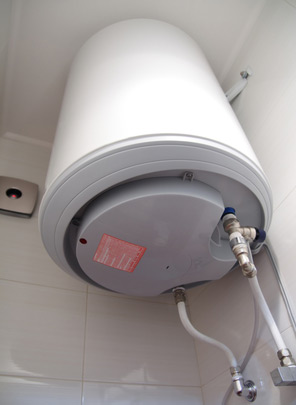Key Care Strategies for Your Home's Hot Water System
Key Care Strategies for Your Home's Hot Water System
Blog Article
We've noticed the article relating to Tips For Maintaining Your Hot Water Heater below on the net and felt it made good sense to share it with you on this page.

Warm water is vital for day-to-day comfort, whether it's for a rejuvenating shower or washing dishes. To guarantee your warm water system runs efficiently and lasts much longer, normal maintenance is vital. This short article gives useful pointers and insights on exactly how to keep your home's hot water system to prevent disruptions and expensive fixings.
Introduction
Preserving your home's warm water system could seem overwhelming, but with a couple of straightforward steps, you can ensure it runs efficiently for years to find. This overview covers everything from understanding your hot water system to do it yourself upkeep tips and knowing when to call professional assistance.
Value of Keeping Your Warm Water System
Regular maintenance not only prolongs the life-span of your warm water system but also ensures it operates effectively. Ignoring upkeep can cause lowered performance, greater power costs, and also early failure of the system.
Indications Your Hot Water System Requirements Upkeep
Knowing when your warm water system requires attention can stop major issues. Look out for indicators such as inconsistent water temperature, strange noises from the heating unit, or rusty water.
Purging the Hot Water Heater
Purging your hot water heater gets rid of debris build-up, improving efficiency and lengthening its life.
Checking and Replacing Anode Rods
Anode rods stop rust inside the container. Evaluating and replacing them when worn is critical.
Complicated Concerns Needing Professional Assistance
Instances include major leakages, electric problems, or if your hot water heater is regularly underperforming.
Routine Specialist Upkeep Perks
Expert maintenance can consist of complete inspections, tune-ups, and making sure compliance with safety criteria.
Evaluating and Changing Temperature Settings
Readjusting the temperature setups ensures optimal efficiency and security.
DIY Tips for Maintenance
You can perform numerous maintenance tasks on your own to keep your warm water system in leading problem.
Checking for Leaks
Regularly check pipes and links for leakages, as these can lead to water damage and greater bills.
Understanding Your Warm Water System
Before diving right into upkeep tasks, it's practical to comprehend the standard elements of your hot water system. Commonly, this consists of the water heater itself, pipelines, anode poles, and temperature controls.
Month-to-month Maintenance Tasks
Routine monthly checks can aid catch small problems before they rise.
Examining Pressure Relief Valves
Examining the pressure safety valve ensures it functions correctly and protects against excessive stress build-up.
Insulating Pipes
Protecting warm water pipes minimizes warmth loss and can save energy.
When to Call a Specialist
While do it yourself maintenance is beneficial, some problems call for professional know-how.
Verdict
Regular maintenance of your home's hot water system is necessary for performance, longevity, and expense financial savings. By adhering to these tips and recognizing when to look for professional help, you can make sure a reliable supply of hot water without unforeseen interruptions.
How to Maintain an Instant Hot Water Heater
Before tinkering with your hot water heater, make sure that it’s not powered on. You also have to turn off the main circuit breaker and shut off the main gas line to prevent accidents. Also turn off the water valves connected to your unit to prevent water from flowing into and out of the appliance. 2. When you’re done, you have to detach the purge valves’ caps. These look like the letter “T†and are situated on either side of the water valves. Doing so will release any pressure that has accumulated inside the valves while at the same time avoid hot water from shooting out and burning your skin. 3. When the purge valves’ caps are removed, you have to connect your hosing lines to the valves. Your unit should have come with three hoses but if it didn’t, you can purchase these things from any hardware or home repair shops. You can also get them from retail stores that sell water heating systems. Read the user’s manual and follow it to complete this task properly. When the hosing lines are connected, open the purge port’s valves. 4. You should never use harsh chemical cleaners or solutions when cleaning your unit. Make use of white vinegar instead. It should be undiluted and you’ll probably use about 2 gallons. 5. Now flush your water heater. This task should probably take about 40 minutes. We can’t give you specific directions for this because the procedure is carried out depending on the type, model and brand of your heater. With that being said, refer to the user’s manual. 6. When you’re done draining the unit, you have to turn off the purge port valves again. Remove the hosing lines that you earlier installed on each of the water valves. Put the valve caps (purge port) back in their respective places and be very careful so as not to damage the rubber discs that are found inside these caps. 7. Now that everything’s back in place, check your user’s manual again to find out how to reactivate your water heating system. 8. Once it is working, turn one of your hot water faucets on just to let air pass through the heater’s water supply pipes. Leave the tap on until water flows smoothly out of it. https://www.orrplumbing.com/blog/2014/september/how-to-maintain-an-instant-hot-water-heater/

Do you really like reading about Water Heater Maintenance Tips You Can't Afford to Forget? Write a remark down the page. We'd be happy to find out your opinion about this article. Hoping that you come back again in the future. So long as you appreciated our blog posting kindly do not forget to share it. Thanks so much for your time spent reading it.
This Site Report this page